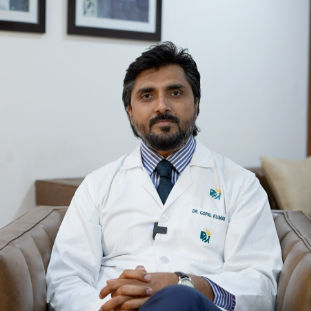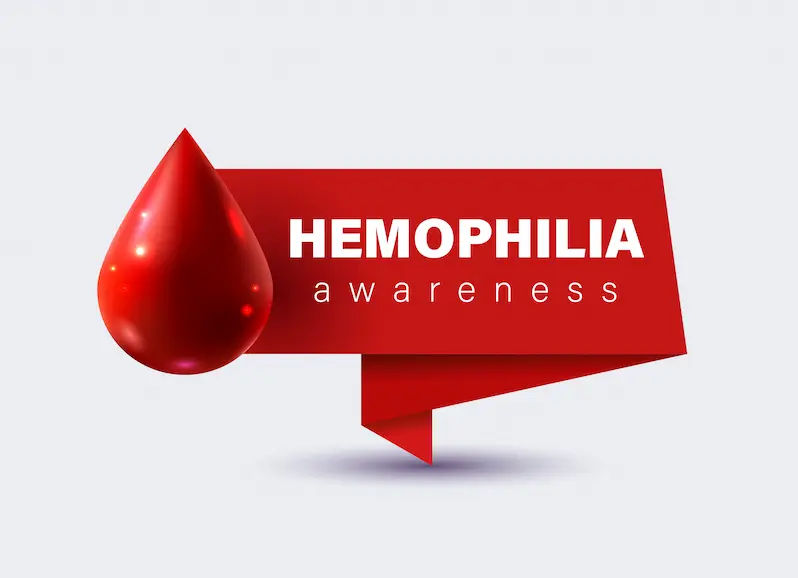Your Haemophilia Journey: An Essential Guide for Parents and Caregivers
Know about haemophilia, understanding what it is, diagnosis

Written by Dr. Rohinipriyanka Pondugula
Reviewed by Dr. J T Hema Pratima MBBS
Last updated on 7th Oct, 2025

Introduction
Receiving a haemophilia diagnosis for your child can feel overwhelming. A flood of medical terms, concerns about the future, and the weight of new responsibilities can leave any parent feeling anxious. But please know this: you are not alone, and with the right knowledge and support, you can confidently guide your child to live a full, active, and healthy life. This guide is designed to walk beside you on this journey, offering practical advice, emotional support, and essential information for parents and caregivers navigating the world of haemophilia care. We'll cover everything from understanding the basics and recognising bleeds to mastering home treatment and caring for your own well-being. Consider this your first step towards becoming an empowered and expert caregiver for your child.
Understanding Haemophilia: More Than Just a Bleeding Disorder
Haemophilia is a genetic disorder that affects the blood's ability to clot properly. It’s often misunderstood as a condition where a person bleeds faster; in reality, they bleed for a longer duration. This happens because their blood is missing or has low levels of specific proteins called clotting factors, which are essential for forming a stable clot to stop bleeding.
What Exactly Happens in the Body?
Think of the clotting process as a domino effect. When a blood vessel is injured, a series of clotting factors (numbered I through XIII) activate in a precise sequence to build a clot. In haemophilia, one of these key factors is deficient. In Haemophilia A, it’s Factor VIII. In Haemophilia B (Christmas disease), it’s Factor IX. Without this critical "domino," the chain reaction is interrupted, and bleeding continues. The severity of haemophilia (mild, moderate, or severe) depends on how much clotting factor is present in the blood.
Consult Top Oncologists
The Genetics Behind Haemophilia: A Simple Explanation for Families
Haemophilia is almost always inherited and is passed down through the X chromosome. Since males have one X and one Y chromosome (XY), a single altered gene on their X chromosome will cause the condition. Females have two X chromosomes (XX); if one X chromosome has the altered gene, the other can usually produce enough clotting factor to prevent serious bleeding problems, making them "carriers." A carrier has a 50% chance of passing the gene to her children. Sons who inherit the altered gene will have haemophilia; daughters who inherit it will be carriers. In about one-third of cases, haemophilia occurs due to a spontaneous genetic mutation with no family history.
The First Steps: Diagnosis and Building Your Healthcare Team
The priority steps include:
Signs and Symptoms That May Lead to Diagnosis
In severe cases, diagnosis may occur after prolonged bleeding from circumcision. In infancy, signs can include unusual bruising as the child begins to move around. As toddlers learn to walk, symptoms become more apparent: excessive bruising, prolonged bleeding from minor cuts, and, most notably, bleeding into joints (knees, ankles, elbows), which may cause swelling, warmth, and irritability in a young child who cannot verbalise pain. If you notice any of these signs, consulting a paediatric haematologist is crucial. For a swift diagnosis, you can book a specialist consultation online with Apollo24|7 to discuss your concerns.
Your Most Important Ally: The Haemophilia Treatment Centre (HTC)
An HTC is not just a clinic; it's your multidisciplinary support system. Your team typically includes a haematologist, specialised nurses, a physiotherapist, and a social worker. They provide comprehensive care, from prescribing treatment to teaching you home infusion training for parents. Studies consistently show that people who receive care at an HTC have better health outcomes and a lower risk of complications. They are your go-to resource for everything medical.
Daily Care and Management: Empowering Your Family
Daily management includes:
Recognising the Signs of a Bleed – It’s Not Always Obvious
For parents caring for a toddler with haemophilia, recognising a bleed is a critical skill. External bleeds are obvious, but internal bleeds, especially into joints (haemarthrosis), are more subtle. Signs include:
Your child is complaining of a "bubbly" or "tingly" feeling in the joint before pain starts.
Reluctance to use an arm or leg (e.g., limping, not reaching for a toy).
Swelling, warmth, or redness around a joint.
General irritability or crying for no apparent reason in a non-verbal child.
Trust your instincts—you know your child best. If you suspect a bleed, act quickly.
The R.I.C.E. Method: Your First-Line Defence for Joint Bleeds
While factor replacement is the primary treatment, R.I.C.E. is an immediate first aid step:
Rest: Stop using the affected joint immediately.
Ice: Apply a cold pack wrapped in a towel for 15-20 minutes to reduce swelling and pain.
Compression: Lightly wrap the area with an elastic bandage.
Elevation: Raise the limb above the level of the heart.
Administer factor replacement as prescribed by your HTC alongside R.I.C.E.
The Miracle of Modern Treatment: Factor Replacement Therapy
The cornerstone of haemophilia care is replacing the missing clotting factor. This is done by infusing concentrated factor product intravenously (through a vein).
Prophylactic vs. On-Demand Treatment: A Proactive Approach
Prophylactic (Preventive) Therapy: This is the gold standard, especially for severe haemophilia. Factor is infused regularly (e.g., 2-3 times a week) to prevent bleeds from occurring. This protects the joints and allows for a more normal lifestyle.
On-Demand Therapy: Treatment is given only after a bleed has started to stop it. This is more common in mild or moderate cases.
The Reality of Home Infusions: A Skill You Can Master
Learning to administer factor at home is life-changing. It empowers you to treat bleeds immediately, minimising damage. It also reduces trips to the hospital. The nurses at your HTC will provide comprehensive training until you feel confident. Many parents find that what was once daunting soon becomes a routine part of caring for a child with haemophilia.
Creating a Safe and Supportive Environment
It can be done by:
Childproofing Your Home for a Child with Haemophilia
Safety is about empowerment, not wrapping your child in bubble wrap. Standard childproofing is essential: pad sharp furniture corners, use safety gates, secure rugs, and install window guards. The goal is to create an environment where your child can explore and develop safely, understanding that minor bumps and bruises are a normal part of childhood, even if they require a watchful eye.
Navigating School, Friends, and Social Life
Open communication is key. Meet with your child’s teachers, school nurse, and principal to create a 504 Plan or Individualised Education Plan (IEP). This document outlines accommodations, such as allowing your child to skip crowded hallways, having a plan for bleeds at school, and excusing them from contact sports. Encourage activities like swimming, cycling (with a helmet), and walking, which are excellent for building strong muscles that support joints. Teach your child how to explain their condition to friends in simple terms.
Looking After You: The Emotional Wellbeing of the Caregiver
The constant vigilance of haemophilia management can be exhausting. Caregiver burnout is real. Your well-being is not a luxury; it's a necessity for your child's health.
Managing Stress and Avoiding Burnout
Permit yourself to feel overwhelmed. Practice self-care, whether it’s reading a book, exercising, or simply taking a quiet walk. Don’t hesitate to ask family and friends for help with chores or babysitting siblings. If anxiety becomes overwhelming, speaking with a therapist can be incredibly beneficial. Apollo24|7 offers convenient online counselling sessions that can provide support from the comfort of your home.
Finding Your Tribe: The Power of Support Networks
Connect with other families through organisations like the Haemophilia Federation (India) or the World Federation of Haemophilia. Sharing experiences, tips, and fears with those who truly understand is invaluable. This sense of community is a powerful source of emotional support for haemophilia families.
Conclusion
The journey of parenting a child with haemophilia is unique, filled with challenges but also immense rewards. You will develop the resilience and strength you never knew you had. By understanding the condition, partnering with a dedicated healthcare team, and mastering daily management, you are not just managing a disorder; you are empowering your child to thrive. Remember, haemophilia is a part of your child's life, but it does not define them. With you as their advocate and guide, they can pursue their dreams, explore their passions, and live a life without limits. Take it one day at a time, celebrate the small victories, and lean on your support system. You’ve got this.
Consult Top Oncologists
Consult Top Oncologists

Dr. Rupam Manna
Radiation Specialist Oncologist
4 Years • MBBS MD(RADIO THERAPY)
Barasat
Diab-Eat-Ease, Barasat

Dr. Sanchayan Mandal
Medical Oncologist
17 Years • MBBS, DrNB( MEDICAL ONCOLOGY), DNB (RADIOTHERAPY),ECMO. PDCR. ASCO
Kolkata
MCR SUPER SPECIALITY POLY CLINIC & PATHOLOGY, Kolkata

Dr.sanchayan Mandal
Medical Oncologist
17 Years • MBBS, DrNB( MEDICAL ONCOLOGY), DNB (RADIOTHERAPY),ECMO. PDCR. ASCO
Kolkata
Dr. Sanchayan Mandal Oncology Clinic, Kolkata

Dr. Gopal Kumar
Head, Neck and Thyroid Cancer Surgeon
15 Years • MBBS, MS , FARHNS ( Seoul, South Korea ), FGOLF ( MSKCC, New York )
Delhi
Apollo Hospitals Indraprastha, Delhi
(25+ Patients)

Dr Gowshikk Rajkumar
Oncologist
10 Years • MBBS, DMRT, DNB in Radiation oncology
Bengaluru
Apollo Clinic, JP nagar, Bengaluru
More articles from Haemophilia
Frequently Asked Questions
1. What are the safest physical activities for a child with haemophilia?
Non-contact sports are generally encouraged as they build muscle strength, which protects joints. Excellent choices include swimming, walking, cycling (with a helmet), badminton, and table tennis. Always consult your Haemophilia Treatment Centre physiotherapist for personalised advice.
2. Can my child with haemophilia ever have surgery or dental work?
Yes, absolutely. With proper planning and management by their haematologist, any necessary surgery or dental procedures can be performed safely. This involves giving factor concentrate before and after the procedure to ensure proper clotting. Always inform the surgeon and dentist about the haemophilia well in advance.
3. How do I handle the financial cost of haemophilia treatment?
Factor concentrates are expensive. It's crucial to explore all options, including government health schemes, insurance policies that cover genetic disorders, and patient assistance programs often run by pharmaceutical companies or haemophilia foundations. The social worker at your HTC can be a great resource for this.
4. What is the life expectancy for someone with haemophilia today?
With access to modern treatment, particularly prophylactic factor replacement therapy, individuals with haemophilia can have a normal or near-normal life expectancy. The focus has shifted from survival to living a high-quality, healthy life.
5. What should I pack in a 'bleed emergency kit' for travel?
Your kit should include: a dose of factor concentrate (keep it cool with a cold pack), syringes, needles, alcohol swabs, a tourniquet, gauze, bandages, and a letter from your doctor explaining the condition and the need for the medication. Always carry this in your hand luggage when flying.
.webp)
